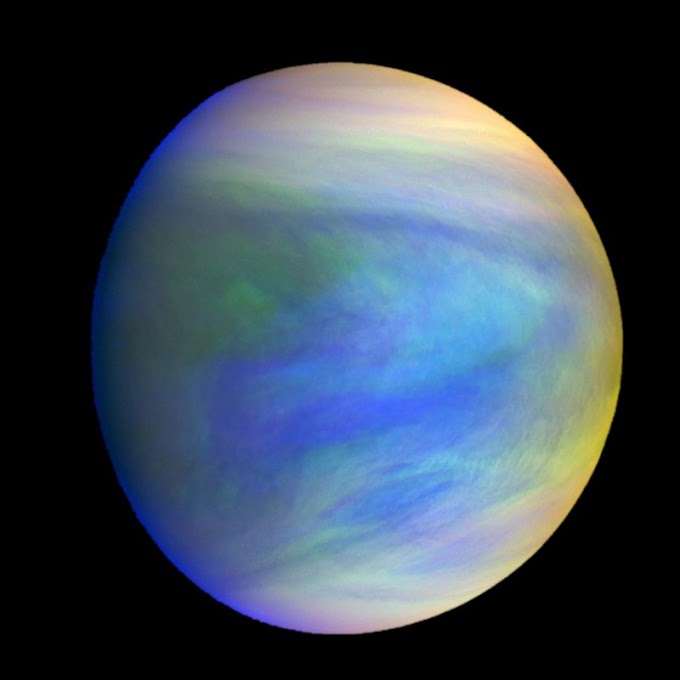Highlights
• Saturn's moon, Titan, has been found to harbor cyclopropenylidene, a highly volatile molecule.
• The molecule was spotted using ALMA, Chile.
• Study of Titan's atmosphere will be beneficial in understanding the "early" Earth.
The ringed beauty, Saturn stands out from it's neighbors with a whooping 82 moons! Out of them, Titan is the largest and also second largest in the solar system after Ganymede, one of Jupiter's moons. It's less than half the size of Earth, about 2575 km, but larger than our Moon.
With mostly a nitrogenous atmosphere, Titan a significant amount of methane in it's lakes, rivers and other liquid bodies.
Want to take a swim? Well for starters, dive 50 ft. below our own oceans, the pressure underwater is roughly the same as you will feel while stranded on Titan's surface.
The chemical composition of Titan's atmosphere results to the characteristic golden haze around it, so wearing specs won't really help.
However, extending observation to certain wavelengths beyond the visible range can help penetrate the thick haze.
 |
| The golden haze of Titan. (Credit: NASA/JPL) |
As per the observations made by scientists at NASA Goddard Space Flight Centre, a highly reactive molecule which goes by the name cyclopropenylidene (read that slowly to get it correct) has been found floating in Titan's atmosphere. This discovery was made using the Atacama Large Millimeter/submillimeter Array (ALMA), Chile.
Cyclopropenylidene is categorized as highly reactive, it instantaneously forms bonds with any element coming in contact with it which makes the molecule hard to detect in the atmosphere of heavenly bodies.
Quite surprisingly, cyclopropenylidene has been found to be present in the clouds of Titan, in unreactive state and only in Titan, no other celestial body has been found to contain this exotic molecule.
Here's the exciting part - the methane rich atmosphere of Titan resembles that of Earth when it was young. Back in those days, our home planet had methane dominating oxygen in the air! So, studying Titan will possibly shed more light on how living beings arose from such a toxic climate of primitive Earth.
Up until now, cyclopropenylidene had been detected in molecular clouds, more appropriately, in Taurus molecular cloud which is more than 400 light years away. As stated in an article published by NASA -
Cyclopropenylidene is the only other closed-loop molecule besides benzene to have been detected at Titan. Closed-loop molecules are important because they form the backbone rings for the nucleobases of DNA, the complex chemical structure that carries the genetic code of life, and RNA, another critical compound for life’s functions.
 |
| Cyclopropenylidene has been detected in Taurus molecular cloud and recently in the atmosphere of Titan. (Credit: Conor Nixon/NASA Goddard Space Flight Centre) |
Let's talk a bit about the 'mystery molecule' - The only ring molecule other than benzene to be found in Titan's atmosphere. Smaller in size, but quite essential since molecule like this form fundamental component of our genetics which in turn affects the 'form' of life.
The formation of cyclopropenylidene is carried out as a dissociative recombination reaction of a cyclic ion, a reaction in which a cation, of a molecule, recombines with an electron resulting in the dissociation of a neutral molecule. The reaction can be represented as follows:
C3H3+ + e− → C3H2 + H
However, under dense cloud conditions, this reaction contributes to less than 1% in the production of cyclopropenylidene (C3H2).
Suggested reads:






3 Comments
Superb 🤗
ReplyDeleteThank you! Do check out the related articles!
DeleteThis comment has been removed by a blog administrator.
ReplyDelete